Centrifugal Casting Machine
Top SuperbMelt vacuum centrifugal casting machine on the market
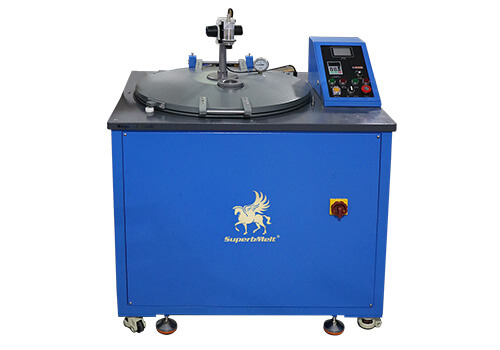
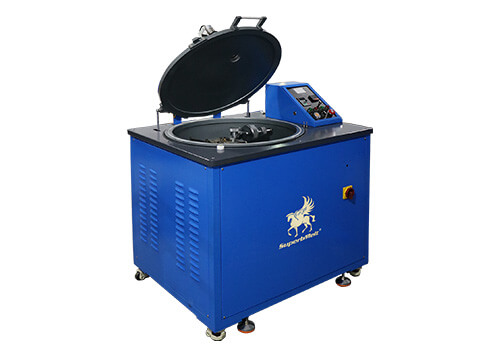
SuperbMelt centrifugal casting machine is the ideal choice for casting high-temperature metals like palladium, platinum, stainless steel, and more in the field of jewelry casting centrifuge. These metals demand high melting temperatures, and our centrifugal casting machine can handle the heat, with a melting temperature reaching up to 2600 degrees Celsius.
The casting process involves pouring molten metal into a rotating mold, maintaining the precise temperature required to achieve the desired length and thickness before solidification. The mold’s rotation, driven by an electric motor, ensures the molten metal evenly distributes along its central axis.
When it comes to jewelry casting with a centrifugal machine, it involves creating wax molds and executing an investment mixing process. Centrifugal casting machines find extensive application in jewelry making, casting dental crowns and bridges, mineral processing, and more. They offer an easy and cost-effective solution for advancing your business in the jewelry casting centrifuge field
| Model number | SPB-CPC250 |
| Power source | Three phase AC 380V |
| Power | 6kw Adjustable |
| Applicable metal | Pt, Pd, Stainless Steel |
| Max flask | 3.5*7inch |
| Crucible size | D65.5mm*H130mm |
| Centrifuge method | Crankshaft |
| Cooling method | Water Cooling |
| Elevation ways | Pneumatic |
| Dimension | 140*140*120CM |
| Weight | 500kg |
- Centrifugal casting process uses centrifugal force. This differs from most casting processes, which use gravity or pressure to fill the mold. In centrifugal casting, a permanent mold made from steel, cast iron, or graphite is typically used.
- Metals cast with centrifugal casting machines have a very fine grain on the outer surface and possess mechanical properties approximately 30% higher than other parts formed with static casting methods.
- Centrifugal casting machines are suitable for melting and casting metals with very high melting temperatures. Such high melting temperature metals are stainless steel, platinum, palladium, etc.
- Centrifugal casting machines are applicable in industries that make use of high melting metals for their production. Such as jewelry production, cookware production, dental application, etc.
- Spinning molds generate centrifugal force on molten metal to position the metal within a mold. As the molten metal solidifies from the outside in, a casting with dense close grain structure is created. As a result of a close grain structure, the centrifugal process offers products with better physical properties than other types of castings.
- Other features of products made with the centrifugal casting machine are; smoother surface, durable and long lasting.
- During the casting process, the spinning of the mold places extreme pressure on molten material. This pressure therefore causes lighter contaminant and impurities to separate from the denser metal. This process minimizes the risk of formation of weak points or areas of porosity within the metal, leaving a highly pure end-product.
- Increased product purity has its effects on production cost-efficiency. High quality products reduce material waste.
Why SuperbMelt Vacuum Centrifugal Casting Machine



Any Question About SuperbMelt Centrifugal Casting Machine

2 years warranty
The warranty for our machine is one year longer than the warranty provided by other factories.

ISO CE SGS approved
Professional certification bodies certify that the machines are of high quality.

Strong service team
We will give response within 24 hours against your problem by our professional engineer.
Ultimate Centrifugal Casting Machine Buying Guide
How to Choose the Best Jewelry Casting Equipment
Jewelry as it is known can be cast using various casting methods. Sometimes, a method used for casting jewelry will be greatly determined by the metal type to be used for jewelry casting.
1.1, Vacuum Centrifugal Casting Method
The vacuum centrifugal casting method of casting jewelry is mainly used to cast jewelries with a high melting temperature, like we have in palladium, platinum and stainless steel. The maximum temperature for melting is usually 2000 degree celsius.
A wax mode (a wax mode can be any combustible material) is first created before using the centrifugal casting machine. A wax mold is created by using a wax injection machine or using a 3D castable resin mold. The wax mold enables jewellers to cast multiple jewelries at once.
The next step is to create a wax mold casting, whereby multiple molds are attached to a sprue to form a wax mold tree and then placed in a flask.
Once the wax mold tree is ready, investment and water is mixed with an investment mixing machine within 2 minutes, the flask is then filled with the consistently mixed investment and water.
The next stage is to harden the investment and melt out the wax, this is possible by placing the flask in a heating furnace for several hours.
The next stage is to remove the flask from the heating furnace and place in a vacuum centrifugal casting machine. The centrifugal casting machine has two chambers, the upper and lower chambers. Melting of high temperature metals takes place in the upper chamber, the molten metal then flows into the lower chamber where the hardened investment flask has been placed.
When this stage is complete, it is time to remove investment from your newly cast jewelry. You can now proceed to wash and polish the new jewelry pieces.
A centrifugal casting machine uses the weight of the high temperature metal and centrifugal force to fill the mold. A force is needed to overcome the surface tension of the molten metal, otherwise, the molten metal will form in a blob and just sit in the mold. If the model is delicate, more force will be needed to push the molten metal into the tiny areas of the mold. If the force is little, the mold does not get properly filled with molten metal. Also, too much force can lead to blowing up the mold. The idea is to have a consistent pressure pushing or pulling the molten metal into the mold. The essential feature of the centrifugal casting is the introduction of molten metal into mold which is rotated during solidification of the casting.
1.2, Vacuum Pressure Casting Method
In the vacuum pressure method of casting, metal is molten under a vacuum high-pressure pump to prevent oxidation. Before jewelry can be cast in a vacuum pressure, jewelry molds have to be formed using the wax casting method which is then set in a flask to allow investment mixture. The investment guides the direction of molten metal in the casting chamber.
The vacuum pressure casting machine uses a vacuum to suck the molten metal into the mold. The crucible is placed centrally in the upper part of the air-tight closed furnace in the core of the induction spool. In the meantime, the flask with the heated up casting form is placed in the lower part of the vacuum chamber.
For the casting process, the crucible is set under pressure and the flask under vacuum. In other words, metal is molten in the upper chamber and flows into the chamber of the vacuum pressure furnace for the casting process without exposure to air or gases. The difference of pressure leads the liquid metal into the finest ramification of the form. The vacuum pressurized casting prevents bubbles and porosity in jewelry. The vacuum chamber is then opened for flask removal and cleaning of jewelries cast.
1.3, Manual Vacuum Casting Method
Just like the vacuum centrifugal casting machine, a wax mold is created before casting jewelry. The manual vacuum casting method is used to cast jewelries in gold, silver, copper and other types of metals. The melting temperature needed by the manual vacuum casting machine is 1600 degree celsius. The casting process begins with a rubber mold created around a master model. Rubber is added layer after layer around the model, then heated to form a precise mold. The mold is injected with wax to create the wax mold.
After wax hardens, it is removed and multiple molds are made. The wax models are attached to a sprue, which will eventually form a channel for the molten metal to enter the mold. The flask or cylinder on which the sprue is attached is then filled with investment. The vacuum removes all air from the flask to create a perfect mold because air bubbles will compromise the quality of the jewelry.
The flask is placed in a heated kiln to harden the investment and melt out the wax. This process however takes several hours. The mold now has the shape of the type of jewelry you want to cast. The hardened mold is placed inside the casting machine and then filled with molten metal. After the metal is poured and set, the cylinder is removed from the machine and quenched in water. The investment is washed off leaving behind the freshly cast jewelry.
1.4, Other Traditional Casting Methods
Traditional jewelry casting methods include sand casting and hand making jewelry with hammer, chisels and anvil.
Sand casting: In the method of casting jewelry using the sand casting method, sand is used as mold. When using the sand casting method, a pattern of the jewelry piece is created. The pattern will provide a metal pathway that will feed the desired cast jewelry design. The pattern can be made of any material like wood, metal or plastic.
Once the pattern is ready, creating a mold is the next step. A refractory material with a stable high temperature, i.e. sand is formed around the pattern. There are different types of sand that can be used to make a mold. The sand typically includes other materials like clay or some chemical bonding agent to strengthen it so that it will stand up to the pouring process.
The mold is produced in two pieces, the top half or cope and bottom half or drag. Once the sand is set around the pattern, the halves are separated and the pattern removed. A refractory coating is added to provide a better surface finish and protect the mold from the turbulence of the molten metal. The halves are placed back together, leaving a cavity in the shape of the pattern. The mold may also include “cores”, a method that is used to produce desired internal passageways in the final product.
Molten metal is poured directly into the mold, it fills the cavity that defines the finished part and risers. The risers’ function is to feed the casting with molten metal. The risers are designed to cool and solidify last. The casting which would include the desired part and the additional metal solidifies and cools. The sand is removed through the shakeout process. The gate, runner, and risers are removed from the cast jewelry and polished.
Handmade Jewelry: Making jewelry by hand requires highly skilled labour in order to control the hand tools. Jewelries are created from a single piece of precious metal that is hand rolled with mills and pulled through the draw plates, the metal is the filed ground and tooled. The completed handmade model will undergo jewelry polishing. Once polishing is done, the expert stone setters hand cut seats into prongs and metal walls to support the gems. The stones are then seated and meticulously secured by the expert stone setter. Although handmade jewelries are unique, the process takes a longer production time and it requires high technical expertise.
1.5, Comparison of Multiple Casting Methods
| Casting Methods | Advantages | Disadvantages |
| Handmade Jewelry | Handmade jewelries are strong and can last a very long time. Different metals can be mixed in one design. The design can be easily manipulated. | Hand Making jewelry requires special skill. Production takes a lot of time and energy.
|
| Sand casting | Flexibility of designing. High complex shapes can be created. Low cost of casting materials. Various metals can be processed. | Poor surface finish. Jewelries have a high capacity for porosity. Low material strength due to porosity. Defects are unavoidable. |
| Manual vacuum casting | Multiple jewelries ca | Inaccurate investment mixing can affect production quality. |
| Vacuum pressure casting | Using a vacuum pressure machine is economical. High quality end products. Allows a wider choice of flexibility. High precision and fine detailed jewelry products. No bubbles that cause poor casting quality. No oxidation of finished products. Fast melting and casting time. | Can be cost intensive. |
| Centrifugal vacuum casting | Gates and risers are not needed. Inclusions and impurities are absent in jewelries cast. Multiple jewelries can be cast at once. Castings have a directional solidification starting from outside to inside. High temperature metals can be melted and cast into jewelries. High production rate and fast production time. | A bit expensive to acquire. |
Why Vacuum Centrifugal Casting Method is the Best Choice for Platinum and Stainless Steel Jewelry
The centrifugal casting method is usually the best method for casting platinum, palladium and stainless steel jewelries because of their high melting temperature and the centrifugal casting system is specifically made to handle such high temperature metals.
2.1, Platinum, Palladium, Stainless Steel Metal Characteristics
| Metal Type | Characteristics | Symbol | Melting Temperature |
| Platinum | Soft, silvery-white, and dense. It is malleable and ductile. Platinum does not oxidize in air even at high temperatures and unaffected by common acids. | Pt | 1768 degree celsius |
| Palladium | Shiny, silvery white metal that resists corrosion. It is the least dense and the lowest melting temperature of the platinum group metals. | Pd | 1555 degree celsius |
| Stainless Steel | Corrosion and heat resistant. Very durable. Long lasting. Attractive appearance. Easy formidability and fabrication. | _ | 1510 degree celsius |
2.2, How to Solve the Casting Problems by Centrifugal Casting
Several problems are known to be caused when using several other methods of casting jewelries, but the centrifugal casting method can solve almost all these problems in order to have a high quality product.
- The final product of jewelry casting is usually dull, cracked and has a high probability of porosity. Sand casting takes a lot of time before an item can be cast. When making jewelries with the sand casting method, there is high exposure to molten metal that can be hazardous to users. In stating all these problems associated with the sand casting method, with the centrifugal casting method all jewelries cast are of very high quality. There is no form of porosity, oxidation or even shrinkage of precious metals. Also, multiple jewelry items can be cast within a short time. All melting and casting is done in an enclosed chamber, hence, operators are not exposed to the risk of getting burned by molten metal.
- Other methods of casting jewelry takes a longer time for production, most especially the hand making method. Centrifugal casting method helps your demands to meet up with supply, therefore, there is production efficiency.
- Investment mixing is a very essential process when it comes to jewelry casting, in the manual vacuum casting method, investment and water are mixed manually, if mixing is not done in the appropriate proportion, there will be defects such as wrinkled surface, pores, incomplete casting, inability of molten metals to join properly, etc. The investment mixing is done with a machine that adequately mixes investment and water when you use the centrifugal casting. The machine is referred to as an investment mixing machine and it mixes water and investment in the accurate proportion. Hence, casting with the centrifugal method is done perfectly without cracks or any other defects.
Centrifugal casting method saves time on melting high temperature metals because the other methods of casting takes a very long time in melting and casting high temperature metals for making jewelry.
2.3, Advantages of the Centrifugal Casting Process
The process of centrifugal casting involves pouring molten metal into a rapidly spinning mold. The force produced by the mold’s spinning, forces the material to conform to the shape of the mold. There are a number of advantages of using the centrifugal casting process.
- Greater strength of jewelries produced using a centrifugal casting is a result of higher density grain structure. Another factor that contributes to the enhanced strength is higher product purity which eliminates internal porosity and improves structural uniformity.
- During the casting process, the spinning of the mold places extreme pressures on the molten metal. This pressure causes lighter contaminants and impurities to separate from the denser metal. These impurities gather in the bore of the component, thereby minimizing the risk of formation of weak points or areas of porosity within the metal. The machining process that follows casting removes these impurities, leaving a pure and high quality product.
- Increased product quality also affects production cost efficiency. The lack of porosity produced through the use of the centrifugal machine allows manufacturers to use less metals and less material waste.
- Centrifugal casting machine is fast to set up and has a shorter production time, leading to improved production cost-efficiency.
- Gates and risers are not needed. Gate refers to the part where molten metal enters the mold cavity. Risers refer to the vertical passage made in the cope to store the liquid metal and supply the same to the casting as it solidifies.
- Reduction of equipment cost: Centrifugal casting offers a substantial saving on capital equipment when compared to forged products.
- Reduction of manufacturing cost: The uniformity resulting from the centrifugal casting process means that machining time and material waste are reduced. Blowholes, sand residue, hard spots, cavities and porosity are completely eliminated.
- Due to the finer grain and denser structure of parts cast with centrifugals there is an increased usage life, greater endurance and impact without fracturing.
Application of Centrifugal Casting Machine
3.1, For Jewelry Casting
The centrifugal casting machine is highly required in the jewelry making industry because of the ease of casting large quantities of jewelries, i.e, mass production is possible. Therefore, jewelry casting with the centrifugal casting machine is efficient. All jewelries produced are of high quality.
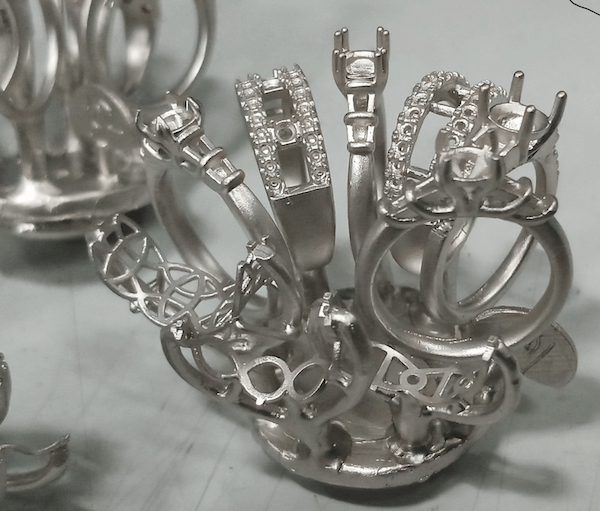
3.2, For Dental Casting
Platinum and palladium are used in dental restorations such as filling of cavities and crowns, bridges, because these metals are ductile and can easily take shape. Fillings are used to repair cracked or broken teeth. The most common application is in the crowns, where the alloys form the core onto which the porcelain is bonded to build up an artificial tooth. Since the late 1970s, palladium has been a great metal used in the dental industry for the manufacture of crown and bridge restoration, constructed by dental technicians. To create crown and bridge dental technicians make use of the centrifugal casting machine.
3.3, For Mineral Processing
Centrifugal casting machine is needed in the mineral processing industry to reduce waste and increase mineral separation efficiency. When using a centrifugal casting machine, the cost of thermal drying is reduced. The compact design of the centrifugal machine makes it ideal for small operating areas.
3.4, For Medals, Artifacts and Awards
Platinum and palladium are top metals that are highly auspicious and it is used for making winning medals for games and sports. They are also used to make religious statues and idols. The centrifugal casting machine makes it possible for these metals to be cast into artifacts, awards and medals.

3.5, For Home and Cooking Utensils
Metals such as stainless steel serve as kitchen accessories, cutlery, and cookware. Less ductile grades of steel are used to make knife blades with sharp edges. More ductile grades of steel are used for items that have to be cast into shape such as cookers, grills, sinks and saucepans with the use of the centrifugal casting machine.
How to Make Jewelry by Vacuum Casting
4.1, Step 1: Making Wax Mold
Wax mold or wax pattern has to be made with either a 3D printer or a wax injection machine. A wax pattern is made into a jewelry mold and then filled with molten metal to create a custom piece of jewelry. When using a wax injection machine, a silicon mold is first made. A model is cut out and filled with melted wax. Once the wax gets cooled, it is ready to form a tree.
When you are using a 3D printer, the printer directly prints the wax model which can be used to form a tree.
4.2, Step 2: Making Wax Mold Tree
All wax molds created are then attached to a sprue to form a wax mold tree. This tree is then placed in a spaced flask.
4.3, Step 3: Making Plaster Mold
Gypsum or investment and water is used to make a plaster mold. Mixing water and investment has to be mixed accurately in order to avoid defects on your metal when casting is done. The mixture is poured into the flask and left to dry in a heating furnace for some hours.
4.4, Step 4: Melting and casting Process in Vacuum Centrifugal Casting Machine
The upper chamber of the vacuum centrifugal casting machine can then be filled with up to 350g of metal (platinum, palladium or stainless steel) that needs to be cast into jewelry. Melting takes place in the upper chamber of the vacuum centrifugal casting machine which is equipped with an induction melting function, and flows to the lower chamber. The flask is placed at the lower chamber of the machine, this is where the casting takes place. Cooling takes place immediately.
4.5, Step 5: Washing, Polishing and Precision Machining
Cleaning and washing takes place once cooling is complete to remove the investment used in casting. A cleaning machine that is specially designed for cleaning jewelry is highly recommended for cleaning cast jewelries. The cleaning machine is equipped with water hoses that washes jewelry at a very high speed and pressure.
Precision machining involves the removal of excess material from your jewelry. Simply put, it means shaping large pieces of material into more precise parts, so that they can meet your exact specifications. This process involves cutting, milling, turning, and electrical discharge machining, and is generally performed using Computer Numerical Control (CNC) equipment.
About Centrifugal Casting Machines FAQ
- 1. What is a centrifugal casting machine?
- 2. How do you cast jewelry with a centrifugal casting machine?
- 3. How do you fix a wax cast at home?
- 4. How do I make a mold for lost wax casting?
- 5. What is the difference between sand casting and centrifugal casting?
- 6. Is core used in centrifugal casting?
- 7. What is casting and its advantages?
- 8. What are the common defects of casting?
- 9. What are the methods of casting?
- 10. Why is it called lost wax casting?
- 11. What is the major disadvantage of the wax casting process?
- 12. What is the main difference between semi centrifugal and centrifuging casting processes?
- 13. What is the working principle of a centrifugal clutch?
- 14. What is a vacuum casting machine?
- 15. How do you vacuum cast?
- 16. What is centrifugal casting?
- 17. How do you vacuum cast jewelry?
- 18. What happens after centrifugation?
- 19. What happens during centrifugation?
- 20. What is the meaning of centrifugation?
1. What is a centrifugal casting machine?
Centrifugal casting machine uses a centrifuge force (high velocity spinning action) whereby molten metal is poured into a preheated spinning die. The die may be oriented on a vertical or horizontal axis depending on the configuration of the desired part. A horizontal axis machine is mostly used for long thin cylinders and vertical axis machines are typically used for rings.
2. How do you cast jewelry with a centrifugal casting machine?
Centrifugal casting is an economical and inexpensive method of casting jewelry. It is easy to use, fast and efficient. First, a wax mold or wax pattern has to be made with either a 3D printer or a wax injection machine. A wax pattern is made into a jewelry mold and then filled with molten metal to create a custom piece of jewelry. When using a wax injection machine, a silicon mold is first made. A model is cut out and filled with melted wax. Once the wax gets cooled, it is ready to form a tree. When you are using a 3D printer, the printer directly prints the wax model which can be used to form a tree. Secondly, all wax molds created are then attached to a sprue to form a wax mold tree. This tree is then placed in a spaced flask. Thirdly, gypsum or investment and water is used to make a plaster mold. Mixing water and investment has to be mixed accurately in order to avoid defects on your metal when casting is done. The mixture is poured into the flask and left to dry in a heating furnace for some hours. The upper chamber of the vacuum centrifugal casting machine can then be filled with up to 350g of metal (platinum, palladium or stainless steel) that needs to be cast into jewelry. Melting takes place in the upper chamber of the vacuum centrifugal casting machine which is equipped with an induction melting function, and flows to the lower chamber. The flask is placed at the lower chamber of the machine, this is where the casting takes place. Cooling takes place immediately. Finally, cleaning and washing takes place once cooling is complete to remove the investment used in casting. A cleaning machine that is specially designed for cleaning jewelry is highly recommended for cleaning cast jewelries. The cleaning machine is equipped with water hoses that washes jewelry at a very high speed and pressure.
3. How do you fix a wax cast at home?
Lost wax casting is a technology that has been in existence for a very long time. Wax can be made at home in order to cast jewelry. To carry out lost wax casting, a wax model needs to be created. To do this, you need special wax, some simple tools and a heat source. It is possible for you to get hard wax and carve it, or soft wax that can be easily manipulated with the fingers. Several other models can be made and attached to form a wax mold tree. Once the wax model is made, it is placed in a flask for further casting processes.
4. How do I make a mold for lost wax casting?
Mold can be made with either a resin 3D printer or using a wax injection machine. With a 3D printer, you can choose the design of any type and print directly. For the wax injection machine, melted wax is injected into the designed mold and when it gets cooled, it is removed from the mold.
5. What is the difference between sand casting and centrifugal casting?
In the sand casting process, molten metal is poured directly into a sand mold. The mold is created when a pattern made out of wood, plastic or metal is placed inside an enclosure and then sand is filled inside the enclosure (i.e. cope and drag). Once the sand is added and packed densely, the matchplate is removed and the remaining cavity is filled with molten metal. Following the pour, the metal solidifies, the mold is opened and the sand is shaken off the hot casting, which leads to a product being manufactured. Centrifugal casting on the other hand uses a centrifuge force where molten metal is poured into a spinning die. The die may be oriented on a vertical or horizontal axis depending on the configuration of the desired part. A horizontal axis machine is mostly used for long thin cylinders and vertical axis machines are typically used for rings.
6. Is core used in centrifugal casting?
A core is basically a body of materials which forms components of a mold. Cores form internal cavities inside the centrifugal casting machine structure which then leads to the final casting shape. Core is an obstruction which when positioned in the mold, does not allow the molten metal to fill up the space occupied by the core. They are required to create the recesses, undercut and interior cavities that are not part of castings.
7. What is casting and its advantages?
Casting is done when any type of metal is melted and placed in a mold to take any desired shape. Advantages of casting include:
- Mass production is possible with casting.
- High quality materials are produced when cast.
- Metals can be cast into any shape, rod or bar.
- Casting is a fast and efficient way of producing jewelries.
8. What are the common defects of casting?
Certain defects are known to accompany metals and jewelries after casting. Such defects include: slag inclusions, gas porosity, incomplete casting, shrinkages, cracks, misrun, shift/mismatch, cold shuts, etc.
9. What are the methods of casting?
There are several methods by which jewelries can be cast. The most common methods are: sand casting, manual vacuum casting and centrifugal casting.
10. Why is it called lost wax casting?
The “lost wax” is so called because the wax model earlier created gets melted in the heating furnace and it is not recoverable, in order to create jewelry pieces.
11. What is the major disadvantage of the wax casting process?
The disadvantages of the lost wax process include:
- Wax casting requires a certain level of skill.
- The cost of equipment and process is high.
- The process limits larger objects due to equipment size.
12. What is the main difference between semi centrifugal and centrifuging casting processes?
Semi centrifugal casting is a variant of centrifugal casting. In the semi centrifugal casting process the mold is rotated around its symmetry axis. The molds are either permanent or expandable. It may have cores also. The shape of the rotating mold gives the shape of the casting. The centrifugal force is put to good use for the processes of slag separation, melt refilling and increasing the filling power to cast components with thin sections. However this process can cause inclusion defects as well as porosity.
13. What is the working principle of a centrifugal clutch?
Centrifugal clutch mainly uses centrifugal force to connect the engine drive shaft with the shaft transmission. It is placed between the engine flywheel and transmission system. Its main function is to connect the engine shaft with the transmission shaft. It works more efficiently at higher speeds. Parts of the centrifugal clutch are: shoes, spring, spider or guides, friction lining, drum, etc.
14. What is a vacuum casting machine?
A vacuum casting machine uses a vacuum powered by gases such as argon or nitrogen to suck molten metal into mold. A force is needed to overcome the surface tension of the molten metal. If not, the metal will just sit in the mold and form a blob. If the force is too little, the mold does not fill up properly.
15. How do you vacuum cast?
Vacuum casting requires a vacuum casting machine, metals, investment, water flask, wax mold etc. In order to vacuum cast any jewelry, the first thing that is needed is to create a model of such jewelry with a wax mold. Several wax molds can be created depending on the size of your production. The next thing is to attach all wax molds in the wax tree. The wax tree is placed in a flask whereby a mixture of investment and water is poured in the flask. The mixture is allowed to dry for some hours before it is placed in a vacuum casting machine. The vacuum casting machine melts the metal and also casts the metal into the wax mold. Melting and casting takes place in two different chambers of the same casting machine. Casting jewelry with a vacuum casting machine makes molten metal form properly in order to achieve a high standard jewelry production.
16. What is centrifugal casting?
In the centrifugal casting, molten metal is poured in a preheated spinning die. The die may be on a horizontal or vertical axis depending on the configuration of the desired part. By spinning a mold while molten metal is poured into it, centrifugal force acts in distributing the molten metal in the mold at pressures approaching 100 times the force of gravity.
17.How do you vacuum cast jewelry?
Vacuum casting jewelry occurs when you use a vacuum casting machine to make jewelry. The vacuum casting machine has two chambers, one that melts and the other casts. Although, wax molds of jewelry models have to be prepared before setting into the vacuum casting machine.
18. What happens after centrifugation?
Centrifugation is the separation process that relies on the action of centrifugal force to separate particles in a solid-liquid mixture into two distinct phases consisting of sediments and centrifugate.
19. What happens during centrifugation?
During centrifugation, molten metal is poured in a spinning die. By spinning a mold while molten metal is poured into it, centrifugal force acts to distribute the molten metal in the mold at pressures approaching 100 times the force of gravity.
20. What is the meaning of centrifugation?
Centrifugation is a technique that is used for the separation of particles from a solution according to their size, shape, density, viscosity of the medium and rotor speed.

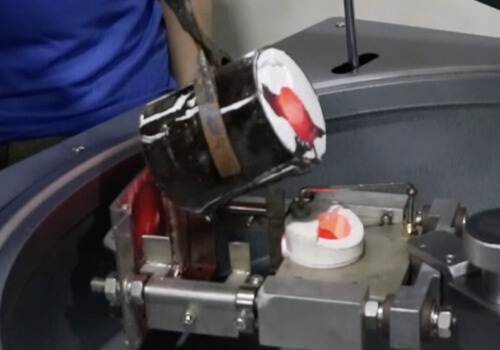
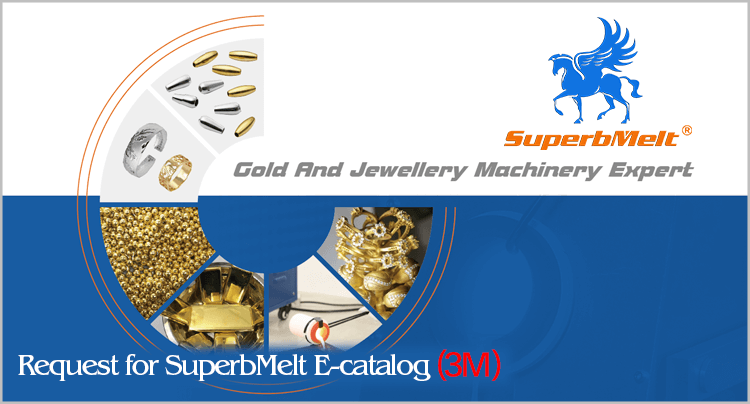
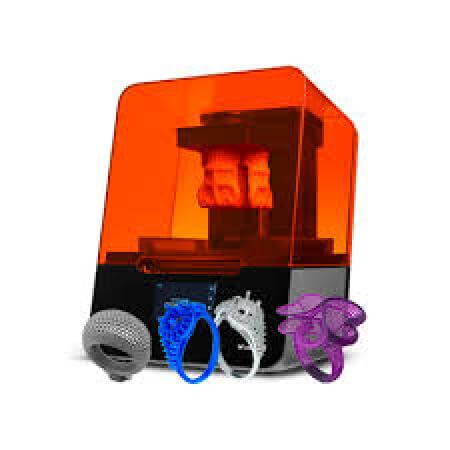
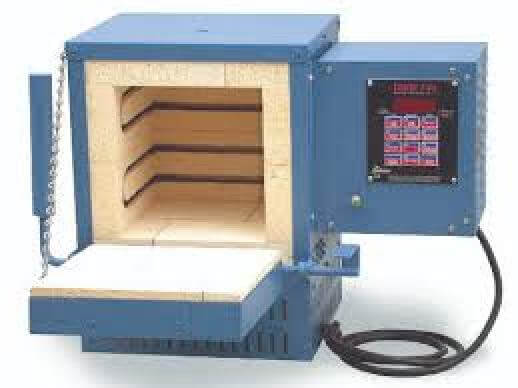
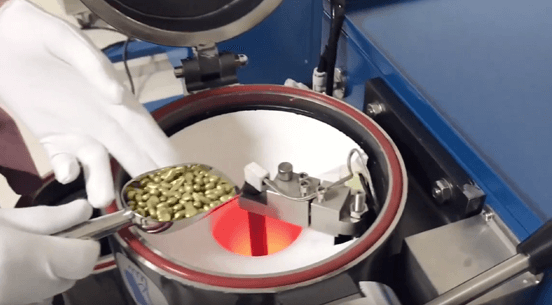
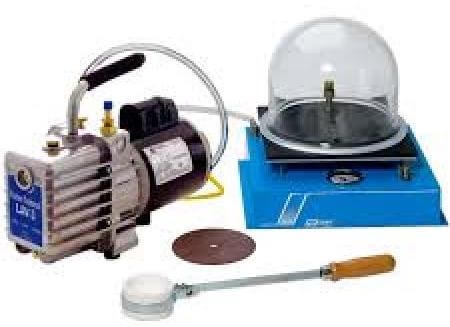
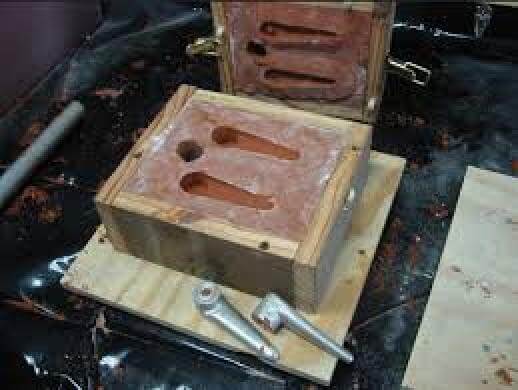
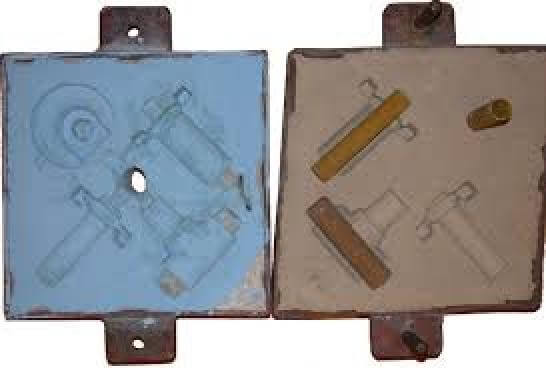
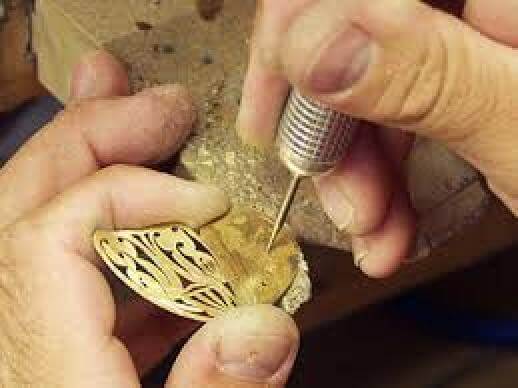
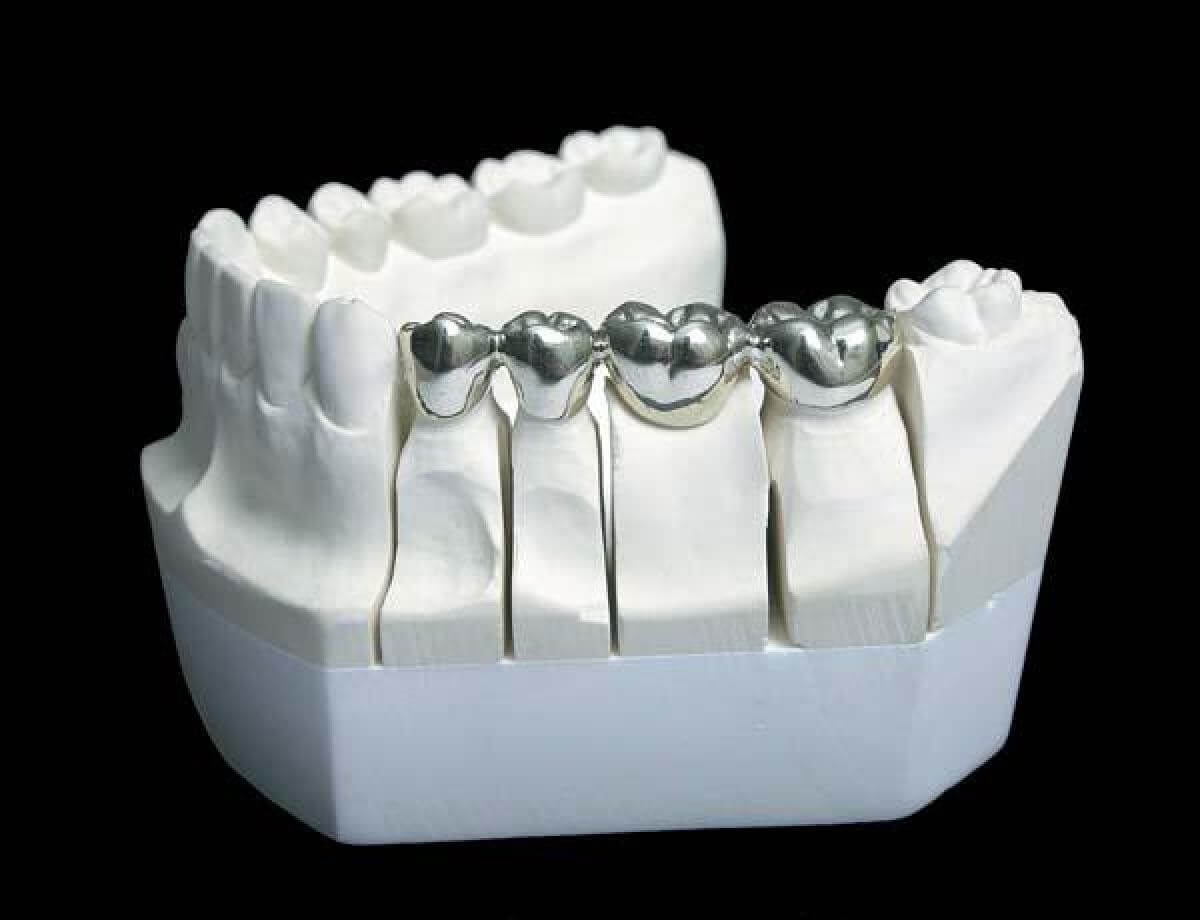
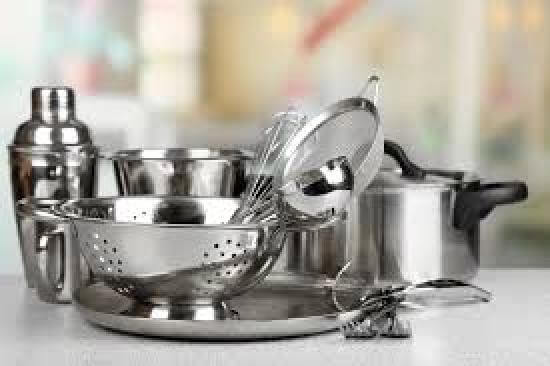
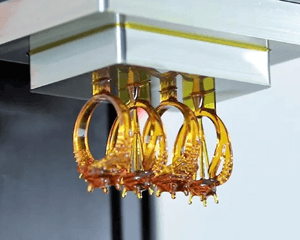
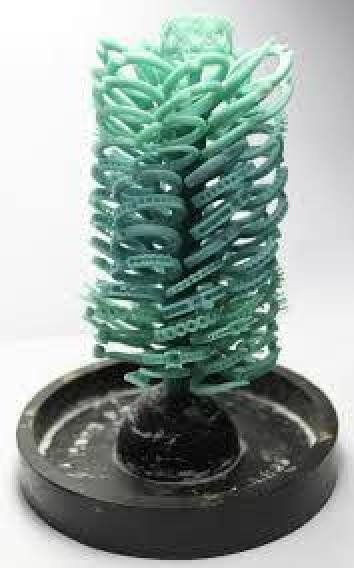
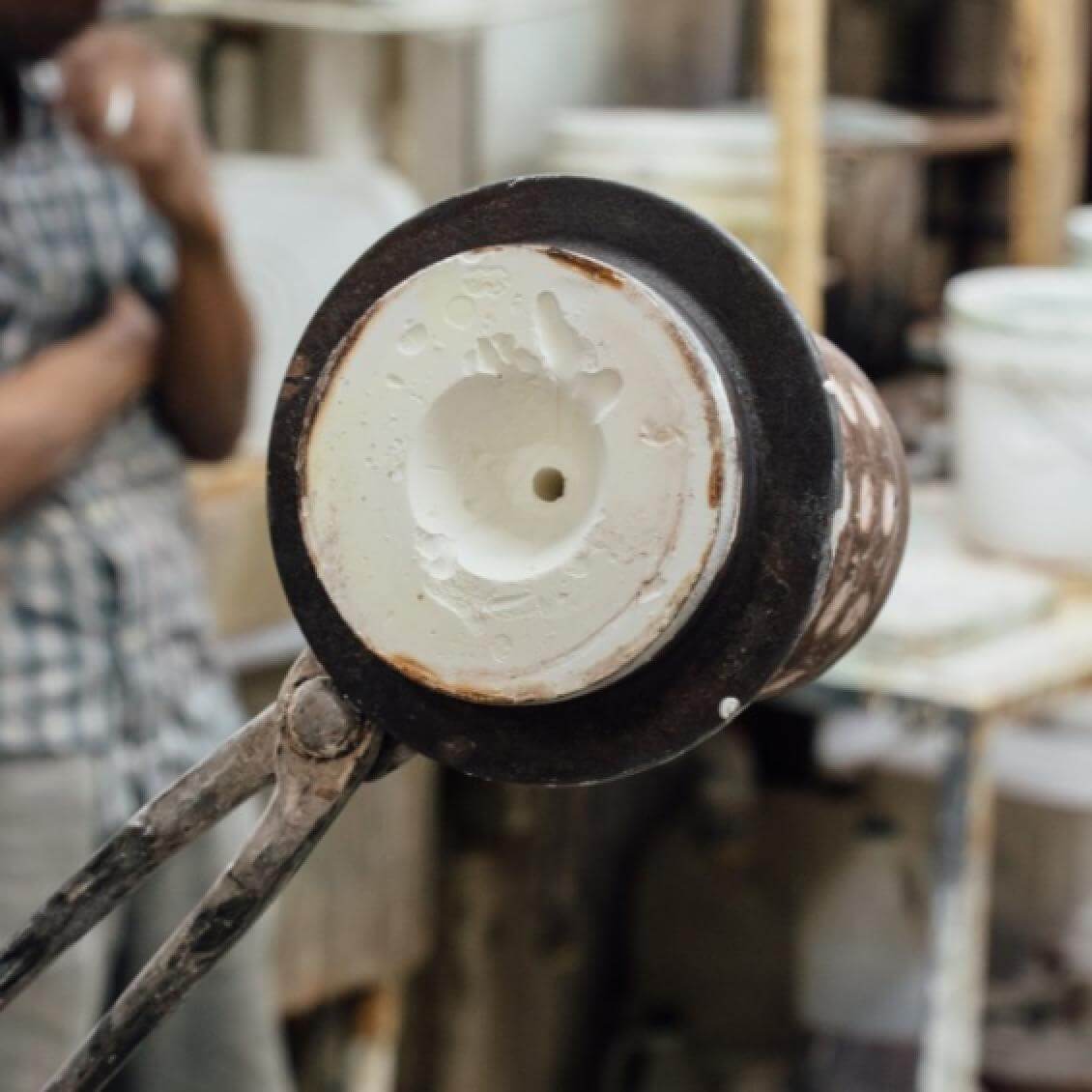

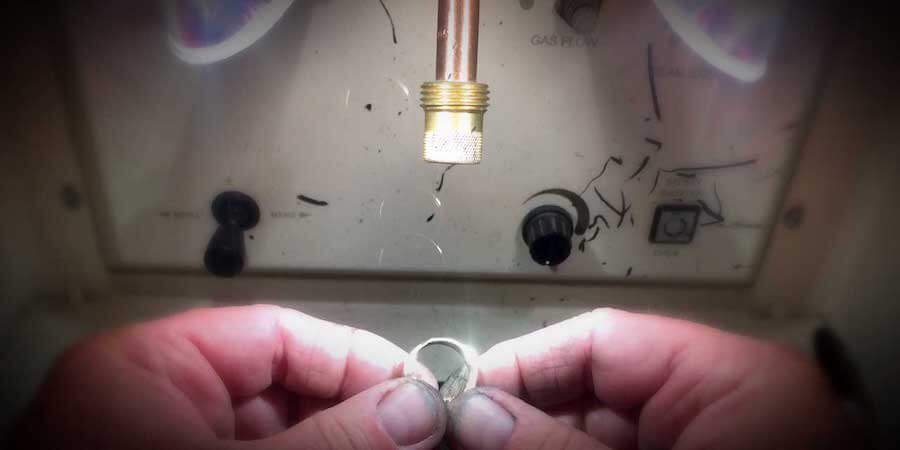
 © Copyright 2008-2021 Superb Electromachinery Co., Limited
© Copyright 2008-2021 Superb Electromachinery Co., Limited